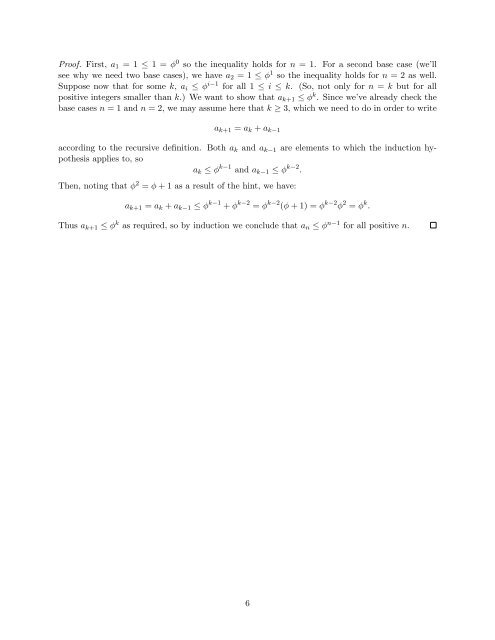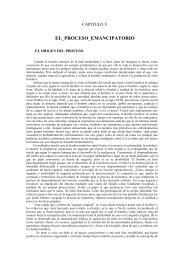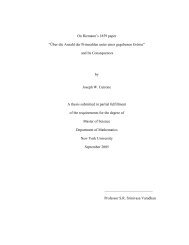Math 300: Final Exam Practice Solutions
Math 300: Final Exam Practice Solutions
Math 300: Final Exam Practice Solutions
Create successful ePaper yourself
Turn your PDF publications into a flip-book with our unique Google optimized e-Paper software.
Proof. First, a 1 = 1 ≤ 1 = φ 0 so the inequality holds for n = 1. For a second base case (we’ll<br />
see why we need two base cases), we have a 2 = 1 ≤ φ 1 so the inequality holds for n = 2 as well.<br />
Suppose now that for some k, a i ≤ φ i−1 for all 1 ≤ i ≤ k. (So, not only for n = k but for all<br />
positive integers smaller than k.) We want to show that a k+1 ≤ φ k . Since we’ve already check the<br />
base cases n = 1 and n = 2, we may assume here that k ≥ 3, which we need to do in order to write<br />
a k+1 = a k + a k−1<br />
according to the recursive definition. Both a k and a k−1 are elements to which the induction hypothesis<br />
applies to, so<br />
a k ≤ φ k−1 and a k−1 ≤ φ k−2 .<br />
Then, noting that φ 2 = φ + 1 as a result of the hint, we have:<br />
a k+1 = a k + a k−1 ≤ φ k−1 + φ k−2 = φ k−2 (φ + 1) = φ k−2 φ 2 = φ k .<br />
Thus a k+1 ≤ φ k as required, so by induction we conclude that a n ≤ φ n−1 for all positive n.<br />
6





